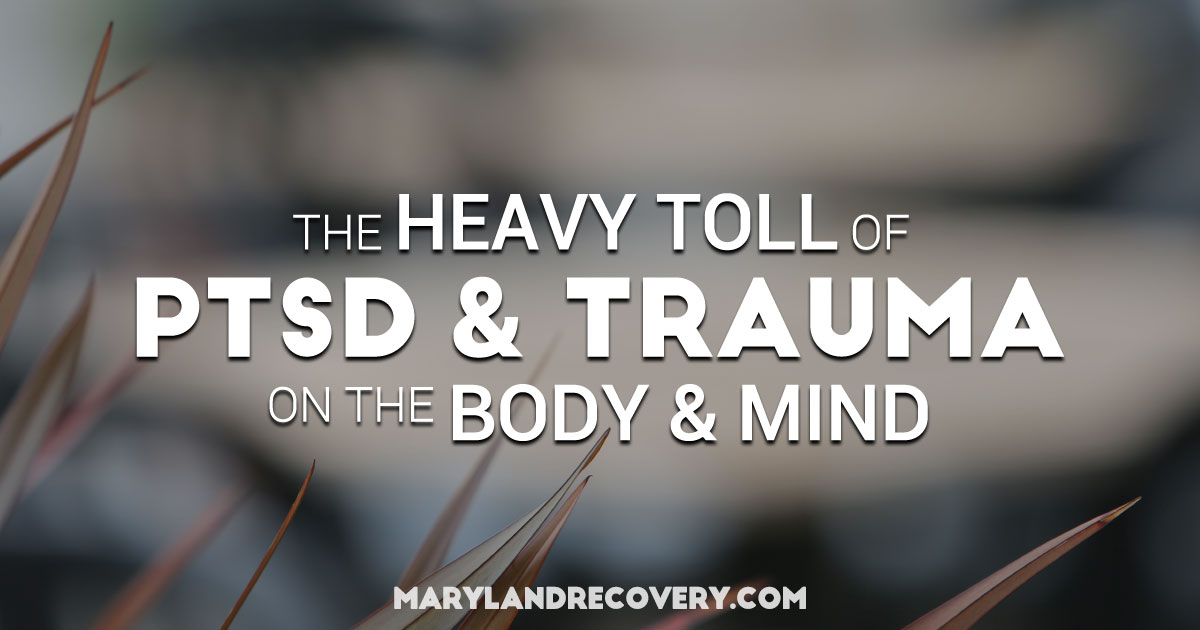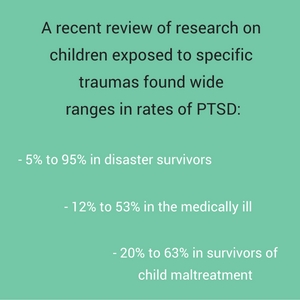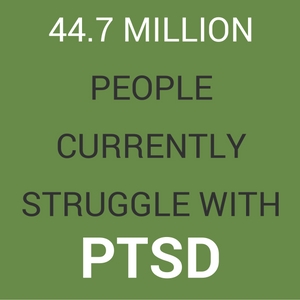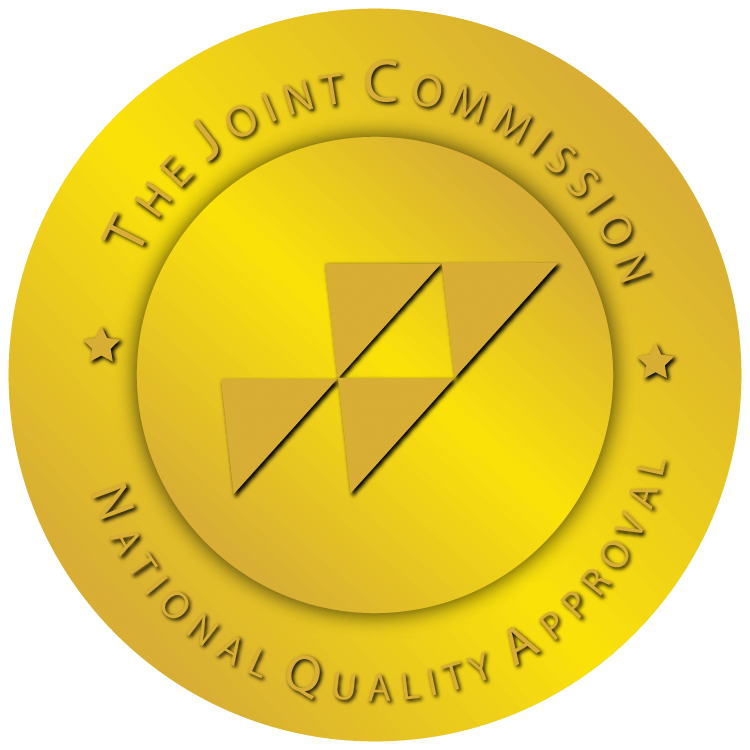 Trauma poses a compelling threat to public health. According to data from PTSD United, a nonprofit organization, 70% of all adults in the United States (223 million people) have experienced some sort of trauma in their lifetime. Of those adults, 20% will develop post-traumatic stress disorder (PTSD). An estimated 44.7 million people currently struggle with PTSD.
Trauma poses a compelling threat to public health. According to data from PTSD United, a nonprofit organization, 70% of all adults in the United States (223 million people) have experienced some sort of trauma in their lifetime. Of those adults, 20% will develop post-traumatic stress disorder (PTSD). An estimated 44.7 million people currently struggle with PTSD.
Trauma and PTSD, like so many other mental illnesses, are silent diseases. Victims often feel isolated and misunderstood. Continue reading to understand PTSD and trauma, the effects they have on the mind and body, and how you can support those suffering from these debilitating conditions.
What Is Trauma?
According to the American Psychological Association (APA), trauma is defined as an emotional response to a deeply disturbing event or disaster, such as an accident, assault, natural disaster or exposure to violence. Trauma may manifest as shock or denial immediately following such an event or disaster. These feelings can develop into unpredictable emotions, mood swings, flashbacks or even physical symptoms such as nausea and headaches.
Over time, the trauma may progress into PTSD.
What Is PTSD?
PTSD is the collective name given to a set of symptoms that persist in response to a traumatic event. People suffering from PTSD may feel frozen in time, reliving their traumatic experience over and over. They may also feel persistent feelings of helplessness, depression and even rage. They may have trouble sleeping, fear crowded spaces, have a severe distrust of others, or feel the need to be continually preoccupied. Panic attacks are also common.
A History Of PTSD
 Trauma and PTSD are historically linked with soldiers coming home from battle. The idea of PTSD is nothing new, but its status as a clinically diagnosed disorder is a relatively new concept.
Trauma and PTSD are historically linked with soldiers coming home from battle. The idea of PTSD is nothing new, but its status as a clinically diagnosed disorder is a relatively new concept.
In 1980, the APA added PTSD to the Diagnostic and Statistical Manual of Mental Disorders. Previously, PTSD was simply referred to as “shell shock” or “battle fatigue.” However, anyone can suffer the effects of PTSD.
The term is now used to refer to anyone who has experienced a severe disruption to his or her everyday life. According to PTSD United, one out of nine women suffer from PTSD – twice as many as men, who have more commonly seen battle.
The Costs Of PTSD
PTSD and trauma have significant financial and societal costs. According to the National Institutes of Health, the annual cost of anxiety-related disorders is estimated to be around $42.3 billion. People with PTSD also are among the highest health care users. PTSD can affect both the mind and the body, so it presents a wide array of symptoms that may be misdiagnosed.
PTSD may also present with comorbidities – the presence of two chronic diseases that occur at the same time. For instance, an estimated 50% of all patients receiving outpatient mental health services also have PTSD.
This condition also remains prevalent in the military. According to the U.S. Department of Veterans Affairs, 20% of Operation Enduring Freedom and Iraqi Freedom veterans, 10% of Gulf War veterans, and 30% of Vietnam veterans have experienced PTSD.
Identifying PTSD
PTSD can happen to anyone. People who have been exposed to a traumatic event, either directly or as a witness, may be vulnerable. Even those who help victims can develop PTSD, such as law enforcement officers and health care workers. This is referred to as “secondary exposure.”
PTSD Physical Symptoms:
Cortisol is a chemical produced in the adrenal cortex as a stress response. In cases of PTSD, the body reacts to the trauma and stress by releasing increased levels of cortisol, which can lead to the following post traumatic stress physical symptoms:
- Ringing in the Ears (Tinnitus)
- Weight Gain (around the abdomen, waist, love handles and stomach, especially)
- Changes in Digestion (Indigestion, increased heartburn symptoms, lack of or increased appetite, irritable bowel, Gas – cortisol inhibits digestion)
- Aches and Pains (Sore Joints, bone pain, and a lack of energy combined with sore and achy muscles)
- Muscle Loss (and trouble gaining muscle)
- Decreased Blood Flow to the Extremities (Icy, white hands and feet).
- Uncontrollable Yawning
- Increased Allergies (and an increase in immune system and histamine response)
There is often a delayed response until symptoms begin to appear. In people with complex compensation mechanisms, the process can even take years. Symptoms vary from person to person, making each case unique. Common symptoms include:
- Avoidance behavior
- Seeking out conflict
- Flashbacks
- Nightmares
- Amnesia
- Social isolation
- Emotional instability
What Are The Effects Of PTSD And Trauma On The Body?
 We often think of trauma and PTSD in terms of emotional symptoms, but they take a physical toll on their victims, too. General symptoms include chronic pain, headaches, stomach pain, vomiting, lower back pain and muscle cramps.
We often think of trauma and PTSD in terms of emotional symptoms, but they take a physical toll on their victims, too. General symptoms include chronic pain, headaches, stomach pain, vomiting, lower back pain and muscle cramps.
Trauma creates deep muscle contractions designed to protect our bodies. In the wild, this is referred to as a fight or flight mechanism, which is a deeply ingrained instinct designed to keep humans and animals alive. If we (or animals) survive a traumatic encounter, we relieve excess tension through trembling, shaking, and twitching. This helps us process the encounter and face subsequent threats.
Humans, however, have a distinct difference from animals: Our brains are more developed and we have a frontal cortex. Unlike animals, we are capable of reason. We’re also sensitive to the stigmatization of our environment: How many times have we been told to “get over it” or “suck it up”? In light of these criticisms, we’re more likely to hold onto our traumatic feelings and thoughts to process at a later date. This upsets our brain’s delicate balance.
Trauma, PTSD And Our Brains
Our brains undergo a physical change when we witness or are a victim to a traumatic event. The amygdala, hippocampus and prefrontal cortex are all involved in our response to trauma.
Research suggests PTSD can create chemical differences in the function of these areas. Traumatic stress is associated with the release of cortisol and norepinephrine. Cortisol and norepinephrine are also referred to as “stress hormones.” People suffering from PTSD experience increased levels of these elements in response to stress. Excess cortisol and norepinephrine can lead to chronic fatigue, depression and back pain.
Trauma, PTSD And Our Emotions
Trauma and PTSD also take emotional tolls on our body. Emotional symptoms of trauma vary from person to person, but can include depression, anxiety and feelings of isolation. Other times, people may seek out conflict or react violently to stressors. This is all linked to our fight or flight response”: Some respond with aggression and others flee.
PTSD is also believed to be a result of a traumatic event finally overriding our compensation mechanisms. Compensation by itself is not unhealthy. Some of us may deal with witnessing a traumatic event by helping others affected, for example. When we fail to process traumatic stimuli in a healthy way, though, we are vulnerable to developing PTSD.
Treating Trauma And PTSD
 Treatment for PTSD requires a comprehensive approach dedicated to processing trauma in a healthy way. Victims often find relief using a combination of medications and cognitive behavioral therapy (CBT).
Treatment for PTSD requires a comprehensive approach dedicated to processing trauma in a healthy way. Victims often find relief using a combination of medications and cognitive behavioral therapy (CBT).
Selective serotonin reuptake inhibitors (SSRIs), commonly used to treat depression, are effective in treating some PTSD symptoms. CBT has also been known to help.
CBT is a short-term, goal-oriented therapy. A PTSD sufferer works with a therapist to identify the thoughts that make his or her feelings worse and then process the negative emotions associated with his or her traumatic experience. CBT helps a PTSD sufferer have less fear about his or her memories, while additional group and family therapy can help establish a support system.
Treatment Approaches To Trauma And PTSD
Over the years – as the scientific community has become accepting of the existence of PTSD and more open to exploring treatments – a group of well-researched and increasingly-used therapies and approaches have been developed and are being implemented into treatment programs. Here we will touch on some of the most popular:
Exposure Therapy For PTSD
A controversial technique for treating PTSD, this method centers around challenging the patient to “face their fears.” This can be done in several ways, including visualizing the traumatic events, writing about the events, or even challenging the patient to visit persons or places linked to the trauma.
Cognitive Therapy For PTSD
A therapy originally developed by American psychiatrist Aaron T. Beck, this approach to treating PTSD follows the cognitive model and involves working with a therapist — on an ongoing schedule — to help identify patterns in the beliefs of the individual, becoming aware of these beliefs, and actively working to “rewire” how these beliefs affect us on an emotional level.
Roland Bal’s Approach To Treating Complex Trauma And PTSD
Roland Bal uses a cognitive and somatic (body) based psycho-therapeutic approach to effectively treat complex trauma and PTSD. His approach focuses on regulating, processing and containing the processes of dissociation, the fight-flight-freeze-please responses and relearning boundaries and vulnerability. He works both online, using audio and video, and offline in his practice in Barcelona. Additionally, his website https://rolandbal.com/ provides e-books, trauma care guided meditations and online courses.
Eye Movement Desensitization And Reprocessing (EMDR)
While it is still unclear on how this process actually works to effectively treat PTSD, initial studies have shown this to be a promising therapy for trauma and other psychological issues. The therapy focuses on having the patient follow a set of eye movement patterns while recounting the details of the traumatic event. Still in its infancy, this process is undergoing testing, but future studies are expected to shed more light on the initial study successes.
![]()
Trauma and PTSD are very real diseases that have emotional and physical consequences. Without proper treatment, victims of trauma face an endless cycle of compensation, depression, isolation and conflict. Luckily, there are multiple approaches to treating PTSD today, coupled with a better understanding of the disease, that allow for those suffering from trauma and PTSD to seek treatment and work toward a peaceful life once again.
Reviewed by Christopher Schwartfigure MS, LGPC, CAC-AD








